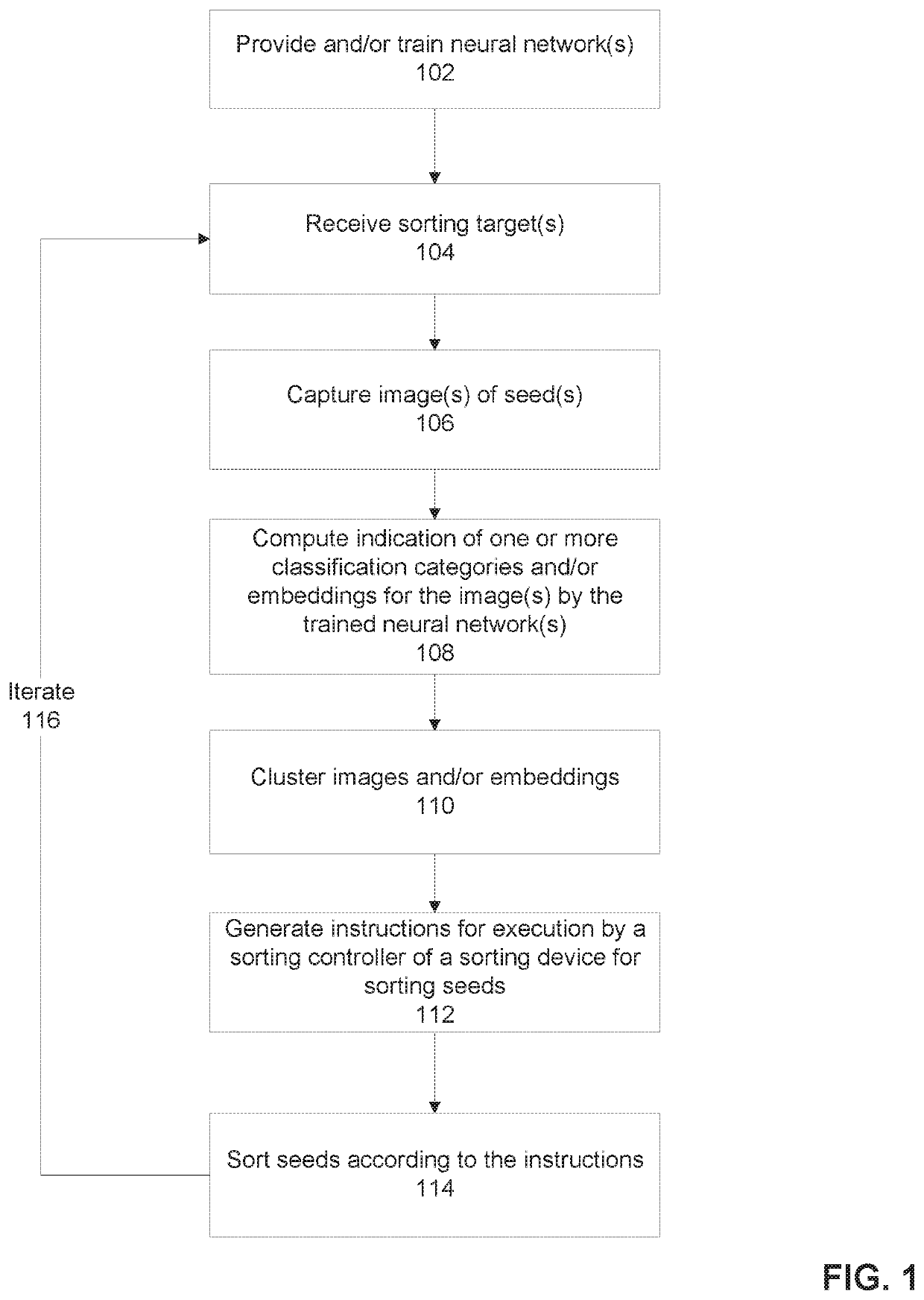Systems and methods for sorting of seeds
- Summary
- Abstract
- Description
- Claims
- Application Information
AI Technical Summary
Benefits of technology
Problems solved by technology
Method used
Image
Examples
example 1
Hybrid (F1) Classification
[0423]Materials & methods: Seed samples: Seeds of F1 variants of tomato, pepper, corn melon and cucumber were taken. Nine Tomato hybrids were produced in the same season in a green house under the same environmental conditions. All seeds were treated the same way and went through the same processes, based on methods known in the art. Five Tomato hybrids were produced in the same season in a greenhouse under the same environmental conditions. All seeds were treated the same way and went through the same processes, based on methods known in the art. Seven corn hybrids were produced under the same environmental conditions in the same season. All seeds were treated the same way and went through the same processes, based on methods known in the art. Three melon hybrids were produced under greenhouse conditions in the same season. All seeds were treated the same way and went through the same processes, based on methods known in the art. Another three melon hybrid...
example 2
Open Line Classification
[0426]Materials and Methods: Seed samples: Seeds of open lines (OP's) of wheat soy and lettuce were taken. Seven wheat OP's were grown in the field under the same conditions, and in the same season. All seeds were treated the same way and went through the same processes, based on methods known in the art. Four soy OP's were grown in the field under the same conditions, and in the same season. All seeds were treated the same way and went through the same processes, based on methods known in the art. Two lettuce OP's were grown in the field under the same conditions, and in the same season. All seeds were treated the same way and went through the same processes, based on methods known in the art.
[0427]Image Acquisition and Analysis: Hundreds of seeds from each hybrid were analyzed by RGB imaging sensor. For each hybrid, the images were split randomly into three groups, training, validation and test of 80% / 10% / 10% respectively. This process was repeated 10 times...
example 3
Distinguishing Between Hybrid and Self
[0428]Materials & methods: Seed samples. Hybrids and their female parental line (self), of 8 tomato different hybrids were produced in a greenhouse under the same environmental conditions and in the same season. For each variant some flowers were chosen randomly for self-pollination and the rest were cross pollinated to create the hybrid seeds. All seeds were treated the same way and went through the same processes, based on methods known in the art. Three melon different hybrids were produced in a greenhouse under the same environmental conditions and in the same season. For each variant some flowers were chosen randomly for self-pollination and the rest were cross pollinated to create the hybrid seeds. All seeds were treated the same way and went through the same processes, based on methods known in the art. Three pepper different hybrids were produced in a greenhouse under the same environmental conditions and in the same season. For each var...
PUM
 Login to View More
Login to View More Abstract
Description
Claims
Application Information
 Login to View More
Login to View More - R&D
- Intellectual Property
- Life Sciences
- Materials
- Tech Scout
- Unparalleled Data Quality
- Higher Quality Content
- 60% Fewer Hallucinations
Browse by: Latest US Patents, China's latest patents, Technical Efficacy Thesaurus, Application Domain, Technology Topic, Popular Technical Reports.
© 2025 PatSnap. All rights reserved.Legal|Privacy policy|Modern Slavery Act Transparency Statement|Sitemap|About US| Contact US: help@patsnap.com



